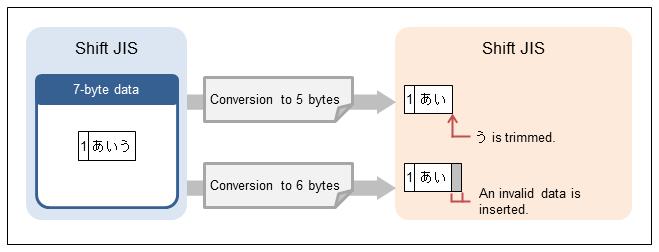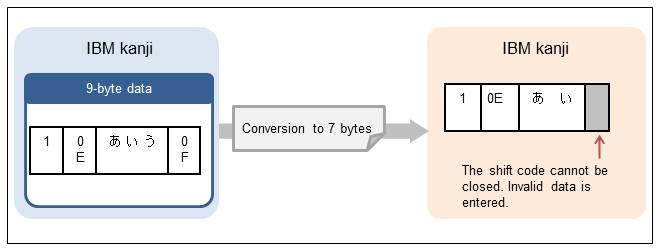Settings for the external character table of the output file
(1) Converting external characters
Specify the external characters for the output file.
Even when converting between the same kanji code type, it is possible to convert external characters. However, codes that are not included in the external character table are output as they are (without being converted). Furthermore, such codes cannot be converted to the default codes, and no error will be generated in such cases.
When the kanji code type is UTF-16, if the Unicode byte order differs between the input settings and the output settings, the byte order will be converted.
(2) Processing when a digit overflow of character data occurs
The processing performed when an overflow occurs during the conversion between the same kanji code type differs from the processing performed when the conversion is between different kanji code types (see Conditions for digit overflow). When a two-byte code is split in half during conversion, the second byte is trimmed and the first byte is output as incorrect data.
When the input or output kanji code type is an EBCDIC kanji code type, sometimes only the starting shift code is output and the ending shift code is not output.
The external character table for the output file can be specified only in DataMagic Server grade.
In DataMagic Desktop grade, the external character table for the output file cannot be specified.

Figure 3.15 Processing for converting to data type M 1 (between the same kanji code type)

Figure 3.16 Processing for converting to data type M 2 (between the same kanji code type)
If the kanji code type is also converted at the same time, the operation differs from the above. For details about digit overflow, see Conditions for digit overflow.